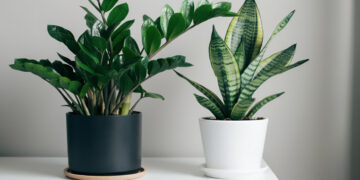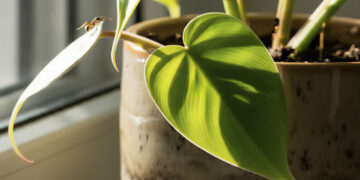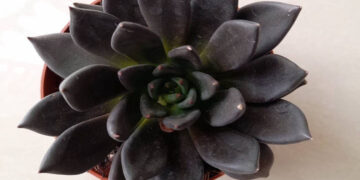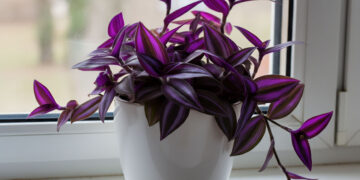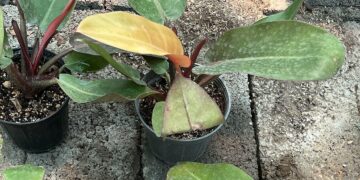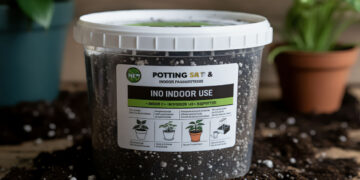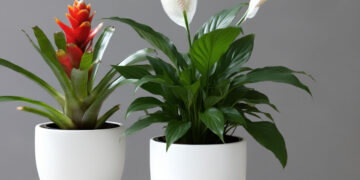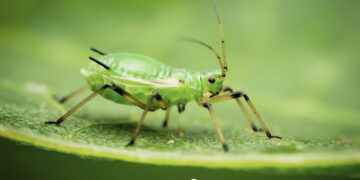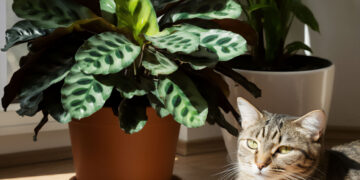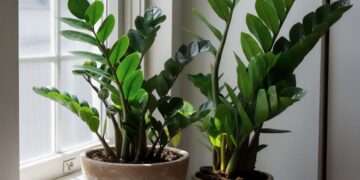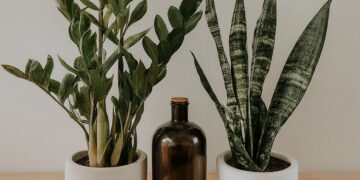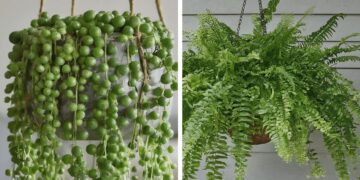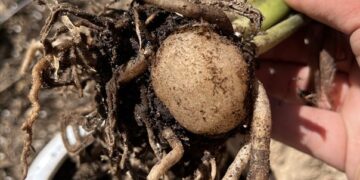
In the realm of houseplants, ZZ plant (Zamioculcas zamiifolia) has a conspicuous position for its majestic leaves and little care it needs. The ZZ plant’s popularity is largely owed to its capability to grow in low-light conditions, a feature by which the plant gained its position among indoor gardeners.
One question that begs an answer is whether the ZZ plant is actually toxic to pets, and in particular to cats? The short answer to this is yes.
The culprit is a large accumulation of a chemical called OXALATE, which turns into crystals in the ZZ plant leaves. Upon ingestion by curious animals, not surprisingly cats, they experience irritation, swelling, and discomfort in their oral and gastrointestinal tract. Rest assured that this substance is far from being lethal. However, the pets’ conditions must be monitored, and preventative measures must always be kept in place.
What Makes ZZ Plants Toxic?
The exact mechanism by which the leaves of the plant turn toxic lies behind the oxalate.
The crystallization is preceded by calcium exposure, which is deemed to be abundant in the plant’s leaves. It is important to mention that this is a naturally occurring phenomenon in the plant.
Once crystals are formed, they assume pointy and sharp edges as part of their physicochemical properties. In other words, they act like spears and can easily tear the mucosal cells down, causing irritation and inflammation.
The inflammation in the cats’ gut shows some symptoms that will be covered in the following section.
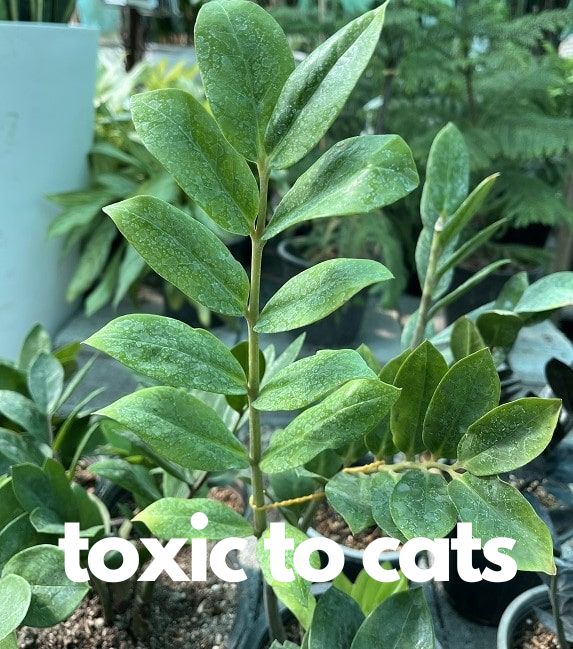
Symptoms of ZZ Plant Toxicity in Cats
Leaves that have been chewed or ingested by cats immediately release the crystals. This causes oral irritation, evident by excessive drooling, pawing at the mouth, or difficulty swallowing.
As a result, the cat shows a lack of appetite for its own food. The severity of symptoms is proportionally related to the amount being taken in. Larger amounts often result in gastrointestinal upset, including vomiting and diarrhea, which can lead to dehydration if not addressed promptly.
Furthermore, direct contact with the plant’s sap may cause skin irritation, leading to redness and itching. Discovering these symptoms in your cat must ensue immediate action to mitigate discomfort and prevent further ingestion.
You might also like: ZZ Plant Toxic to Dogs: What Every Pet Owner Should Know
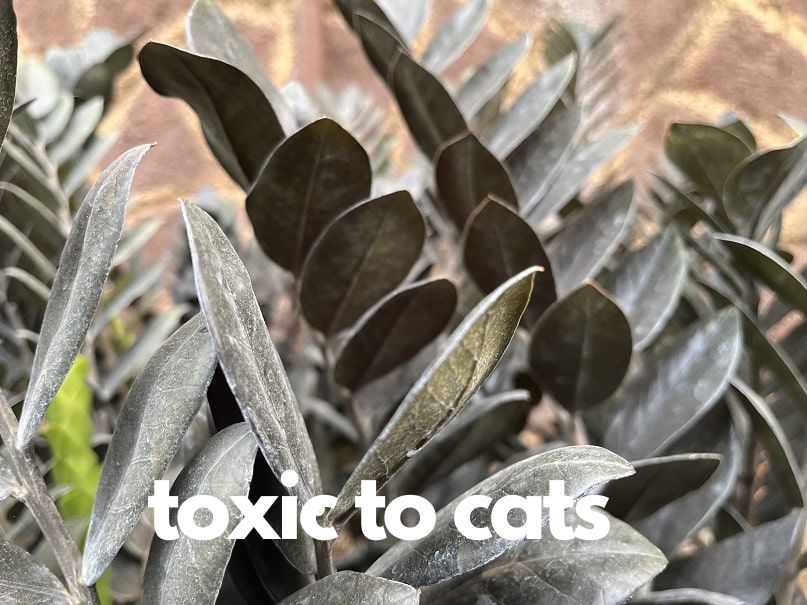
Preventive Measures to Protect Cats
Cats are naturally curious and may nibble around, especially if there is a new item in the house or they don’t have enough distraction.
Apply tips and tricks that act as preventative measures such as:
1. Positioning the plant out of cats’ reach, an easy and cheap way to avoid.
2. Applying natural deterrents can be equally effective; for example, cats naturally dislike the scent of citrus, so placing lemon or orange peels around the plant can keep them at bay.
3. Making a nontoxic bar, namely cat-repellent sprays around the plant area can discourage interest without harming your pet or your plant. Entertaining cats with toys and activities can divert their attention and can make the cat tired, so much so that they would be less likely to chew on the leaves of the houseplants.

Emergency Response to ZZ Plant Exposure
In the event that your cat has been in contact or has ingested bits of the ZZ plant and presents the relevant symptoms, there are some steps that you must follow:
Calm action is necessary to mitigate potential discomfort. Start by gently removing any plant residue from your cat’s mouth, using a damp cloth to wipe away sap to prevent further irritation.
Provide fresh water for your cat to drink; this will dilute the crystals.
If you observe signs of oral discomfort, such as excessive drooling or pawing at the mouth, providing a small amount of milk or yogurt can help soothe the irritation caused.
Close monitoring is warranted, especially for symptoms like vomiting or diarrhea. In cases of severe distress or if symptoms persist, contact your veterinarian immediately for professional advice.

Safe Houseplants for Homes with Cats
For those who have beloved pets and are keen to own plants, there are some plants that are not toxic or not as much as the ZZ plant is, while holding some of the characteristics of the ZZ plant. Here are some more tips.
Nontoxic plants
The primary factor is the plant’s safety if ingested or touched. Opt for plants recognized by the ASPCA as non-toxic to cats, such as spider plants, which are not only safe but also improve indoor air quality.
Air-Purifying Qualities
Many cat-safe plants, like Boston ferns (Nephrolepis exaltata) and parlor palms (Chamaedorea elegans), are excellent for purifying indoor air just as much as ZZ plant is.
Low Maintenance
Replace ZZ plant with those that require minimal care, such as the cast iron plant (Aspidistra elatior) and the ponytail palm (Beaucarnea recurvata). These plants are resilient, requiring less frequent watering and care, making them perfect for busy pet owners.
Stimulating for Cats
Some plants provide sensory enrichment for cats. For instance, cat grass (Dactylis glomerata) is safe for cats to nibble on and can help their digestion. Similarly, catnip (Nepeta cataria) is non-toxic and is good for entertainment.
Aesthetic Appeal
Although safety is above everything, choosing plants that also enhance your home’s aesthetics is a perk. The African violet (Saintpaulia) and the moth orchid (Phalaenopsis) offer beautiful blooms as well as mitigating risk towards your cat’s health.
However, overall I prefer to have a ZZ plant, but I will place it somewhere out of reach of pets. Before you decide, it might be better to know about the benefits and easy care of the ZZ plant.
You might also like: ZZ Plant Flower: The Ultimate Guide to This Rare Indoor Bloom
FAQs
Can ZZ plants kill cats if ingested?
Ingestion typically results in mild to moderate symptoms such as irritation, drooling, and gastrointestinal discomfort rather than death.
Do cats naturally avoid ZZ plants due to their toxicity?
Cats may be deterred by the bitter taste of ZZ plants after an initial nibble, but curiosity can lead them to investigate and potentially chew on plants. It’s best not to rely on a cat’s natural avoidance and instead take proactive measures to ensure their safety.
If you have any questions that I can help answer, or if you’d like to share any experience that can help readers and me, please feel free to comment below.

